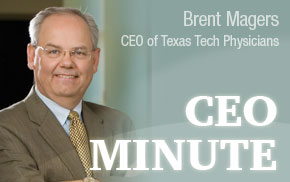 “The order is rapidly fadin’
“The order is rapidly fadin’And the first one now
Will later be last
For the times they are a-changin”
—Bob Dylan
I was a mere lad of 10 years in 1964 when Bob Dylan released the album that contained this title song. (For the younger crowd, an album is a round black shiny vinyl disc which has a hole at its center and it is “played” on a record player.) Fast-forward 45 years later, Aug. 9, 2009, I am sitting in Jones AT and T Stadium with my own son listening to Dylan sing this song. Time had taken its toll on this music legend’s voice; still, it was a treat to listen to an American musical icon.
No, I am not turning this column into an entertainment review, but sometimes I wonder as I wander and think about the changing times in health care. What I mean is, for most of my more than 30-year career, the business side of health care (always complicated in detail), was relatively simple in concept: providers performed various procedures and tests and services, and billed for them. Each item was billed according to a code. Each payor had its own schedule of payments that were negotiated or they just determined them by fiat (take it or leave it) and that is how it worked.
The simple part is you were paid for what you did and the more you did — the more you got paid. We call this fee-for-service, and it is still around (and will be for a while). But, we are looking at a new model of payment — one based on the number of patients in a cohort of patients. Payments will likely be, in part at least, prospective and paid per month for a "medical home" deal wherein we get paid for keeping people away from health care services. I recently read about a program in Massachusetts called the Alternative Quality Contract offered by Blue Cross Blue Shield which actually pays primary care providers to keep patients from emergency rooms, surgeries and certain types of imaging studies — while holding them accountable for meeting quality and patient satisfaction standards.
Think of it this way: When a provider is at risk for a population, the emphasis is on meeting the patient’s needs, holding down costs and satisfying the patient. In a fee-for-service environment, let’s face it — there is not much emphasis on holding down costs. And, is it costs or revenue? Well, as the saying goes, it all depends on whose ox is being gored (pardon the vernacular); but, holding down costs (i.e., avoiding a referral to specialists) is also lost revenue to a specialist.
So, several things come to mind — we will have to do much better job of knowing our costs, controlling our costs and improving coordination of care. We will have to talk and prove outcomes. This is not just idle talk, I think it will eventually happen and when it does it will end up changing our times. By the way, it was a very pleasant summer August evening at the Jones and hearing Dylan — again, a very nice treat.
